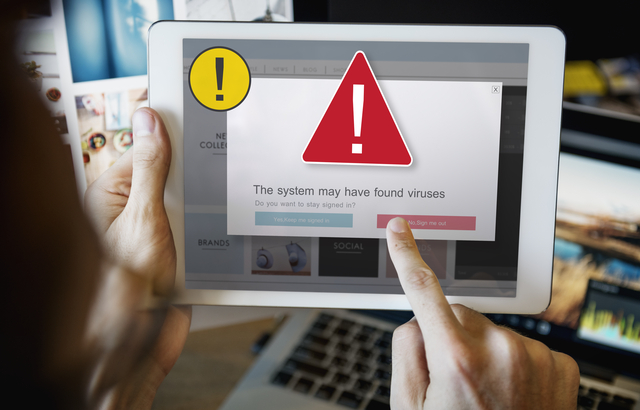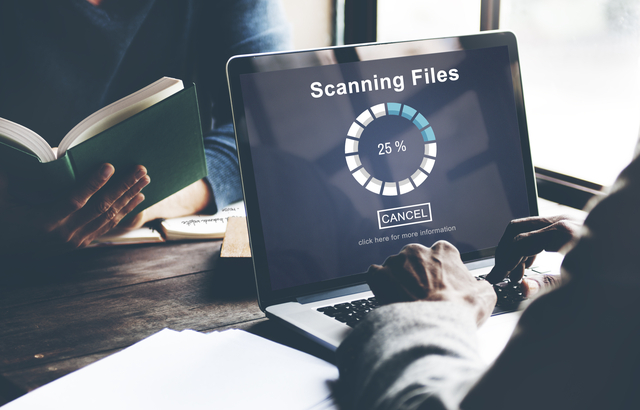Buyers rarely use all the information necessary to evaluate the utility of a particular good or service even when it’s accessible, but in most cases, they do not possess even a fraction of the information available to the vendors.
This information imbalance means that the buyers of antivirus software are placing themselves in the precarious safekeeping of invisible market forces or, even worse, at the mercy of market-dominant vendors. Consumers who don’t like this setup either buy cheaper products (thus reducing the risk of overpaying for a product with qualities they’re unable to evaluate) or postpone the decision to purchase until more information is available.
On the flip side of this conundrum is the cost of doing nothing, a pervasive concept despite its counterintuitive name. In the context of cybersecurity, this means that the decision not to buy antivirus software might end up costing way more than a single-seat license if a CryptoLocker clenches all of your data, photos and correspondence.
The value of a cybersecurity solution
It is precisely because of this concept of the cost of doing nothing that we’re able to determine the value of a cybersecurity solution. Helping you estimate the aforementioned cost is a measure known as 'Value at Risk' (VaR), the probability that a specific loss will occur within a specific timeframe.
"Helping you estimate the cost of doing nothing is Value at Risk, the probability that a specific loss will occur within a specific timeframe."
For example, after looking at a certain set of statistics, you might conclude there is a 1% chance that within a year a DDoS attack will disable your online business for one day, leading to a loss of profit of $10,000. If the management of your company finds this risk acceptable, there’s no need to invest in appropriate security measures (but if misfortune strikes, nobody has the right to say they didn’t see it coming).
VaR is never zero even for typical PC users. They risk their data every time they go online, as confirmed by antivirus software logs that record malware incidents prevented by security software, or by tools like ESET's Virus Radar.
Accepting and aggravating the risk

As it became increasingly obvious that the risk of a malware infection can never be 100% avoided regardless of the time and money invested, the usually upbeat attitude of the internet community turned sour.
At one point, former senior vice president for information security at Symantec, Brian Dye, went so far as to make the oft-repeated claim that antivirus software is dead. His argument was based on the hotly debated assertion that almost all cyber damage is caused by the so-called “zero-day” attacks that exploit vulnerabilities unknown to the developers and antivirus vendors.
According to Dye, security software performs significantly worse against such attacks, and as soon as they're discovered, cybercriminals move on to the next exploitable flaw, making protection from those attacks obsolete. However, even if we take this argument at face value, anti-malware still stops some “zero-day” attacks, which is better than nothing.
In fact, much better: if we were to trust Dye's numbers, commercial anti-malware stops 45% of such previously unknown attacks. Besides, the attitude of IT professionals who consider anti-malware redundant is not based on recklessness, but on efficient backup and recovery procedures: their files are safe either way.
This is not the case when it comes to typical users, who account for a decent share of security breaches.
"Not only do users tend to fall for 'social engineering' traps, but sometimes run straight through the red lights."
Not only do they tend to fall for “social engineering” traps, but sometimes run straight through the red lights. A study by the Carnegie Mellon University School of Computer Science found that 21% of tested users ignored active phishing warnings in their web browsers. The authors of a Microsoft Research study of password habits estimated that 0.4% of internet users type in their passwords at verified phishing sites. That certainly doesn’t sound like much, but the consequences can be dire, as was the case with the recent hacking of US Democratic National Committee systems.

Attackers, allegedly from Russia, mimicked the domains of targeted organizations and tricked victims into entering their credentials. According to the FBI report, "at least one targeted individual activated links to malware hosted on operational infrastructure of [sic] opened attachments containing malware", while others were tricked into disclosing their passwords to a fake webmail domain hosted on the attacker’s infrastructure.
Making it harder for the rest of us
Whether you’re a business or home user, your attitude towards security affects the whole network, because your IT resources can be used to propagate threats and cause damage to other users located anywhere in the world. This is where estimates on global damage from malware come into play.
Inga Beale, CEO of Lloyds, said that cyberattacks cost business worldwide as much as $400 billion in 2015, and a joint study by IBM and Ponemon Institute surveying 350 companies around the world that experienced a data breach in 2015 indicated that the average cost of such incidents amounted to $3.79 million – a total cost of over $1.3 billion for that sample set alone.

No matter how much one downplays the value of security software, the discrepancy between the total estimated damage caused by malware and the money spent on anti-malware solutions globally is still huge: in 2015, all security software vendors generated combined revenues of approximately $22 billion, or roughly 5% of the estimated cost caused by all cyberattacks. Since cybercriminals show no signs of relenting – according to some estimates, damages caused by malware could reach $2.1 trillion by 2019 – it is no wonder that in certain cases, taking cybersecurity risks is no longer allowed by law.
Cybersecurity ceases to be a private matter
Cybersecurity has been a part of the global legislative agenda for some time. In 2007, the European Union, although a bit at odds over how to define what qualifies as cybercrime, communicated the need for “a general policy on the fight against cybercrime”.
In accordance with this policy, the General Data Protection Regulation, which is scheduled to come into force in May 2018, increases the penalties for institutions handling private data that fail to implement appropriate cyber security measures.
"If your company decides to ditch the IT security requirements mandated by law, it leaves itself open to penalties and lawsuits."
Government regulation of cybersecurity can be seen as unjust dumping of IT security costs on the private sector. However, as Ross Anderson of the University of Cambridge noted in his EdX course, the trouble is that the incentives for securing the respective public services just aren't there: most of the time, cybercrime comes down to a series of petty thefts – a couple of hundred dollars here, a couple of hundred dollars there – and remains under the police radar.
In addition, perpetrators of cybercrime are often located in a different jurisdiction and therefore inaccessible to the local law enforcement agencies. Whether this shifting of responsibility for cybersecurity is justified or not, it has become an inevitable circumstance that adds to the cost of business – if your company decides to ditch the IT security requirements mandated by law, it leaves itself open to penalties and lawsuits.
Finally, how much should you invest?
In their 2002 paper The Economics of Information Security Investment, Lawrence Gordon and Martin Loeb of the University of Maryland estimated that in most cases, optimal investment in information security is less or equal to 36.97% of the loss expected in the absence of security.

An important thing to remember is that firewalls and antivirus software are only a part of the solution (and Gordon and Loeb's 36.97%). If you want your company secure, you need user training, awareness campaigns and a set of preemptive and corrective measures. Therefore, Gordon and Loeb’s figure represents the total cost of all cybersecurity products and activities that your company should implement if it wants to effectively mitigate respective risks.
As far as individual users are concerned, it's interesting to look at how much people tend to pay to rescue their IT resources when they have to. According to a report by IBM, almost 40% of consumers would be willing to pay more than $100 to get data back, and most ransomware fetches over $300 per victim.
The paradox here is that typical users usually don't know how much they’re willing to pay before a security incident happens, so the realization that it might have been worth paying $50 to prevent a cost of $300 often comes too late.
Whatever you choose to do as an individual user, bear in mind that rudimentary antivirus solutions can be installed free of charge, regular software patches don’t cost anything, and basic data backup can be arranged at a cost of a single USB stick that you probably already have – in other words, basic implementation of the three key aspects of PC security doesn’t have to cost you anything at all.
Ultimately, there are two ways of deciding what to do about cybersecurity. The first is to check the regulatory requirements that apply to your business, estimate your VaR and the inconvenience of restoring your systems and weigh these against the cost of a security solution.
"Basic implementation of the three key aspects of PC security doesn’t have to cost you anything."
Alternatively, you can simply place your trust in the market for cybersecurity solutions and services, which is expected to grow from $75 billion in 2015 to $170 billion in 2020. It’s not that conformism is a particularly sound approach when it comes to making strategic decisions, but before you beg to differ, make sure you know why and what to do if you turn out to be wrong.
Miroslav Nikolac
Business development at ESET, Croatia
The views and opinions expressed in this article are those of the author and do not necessarily reflect the official policy or position of WLS nor ESET.




